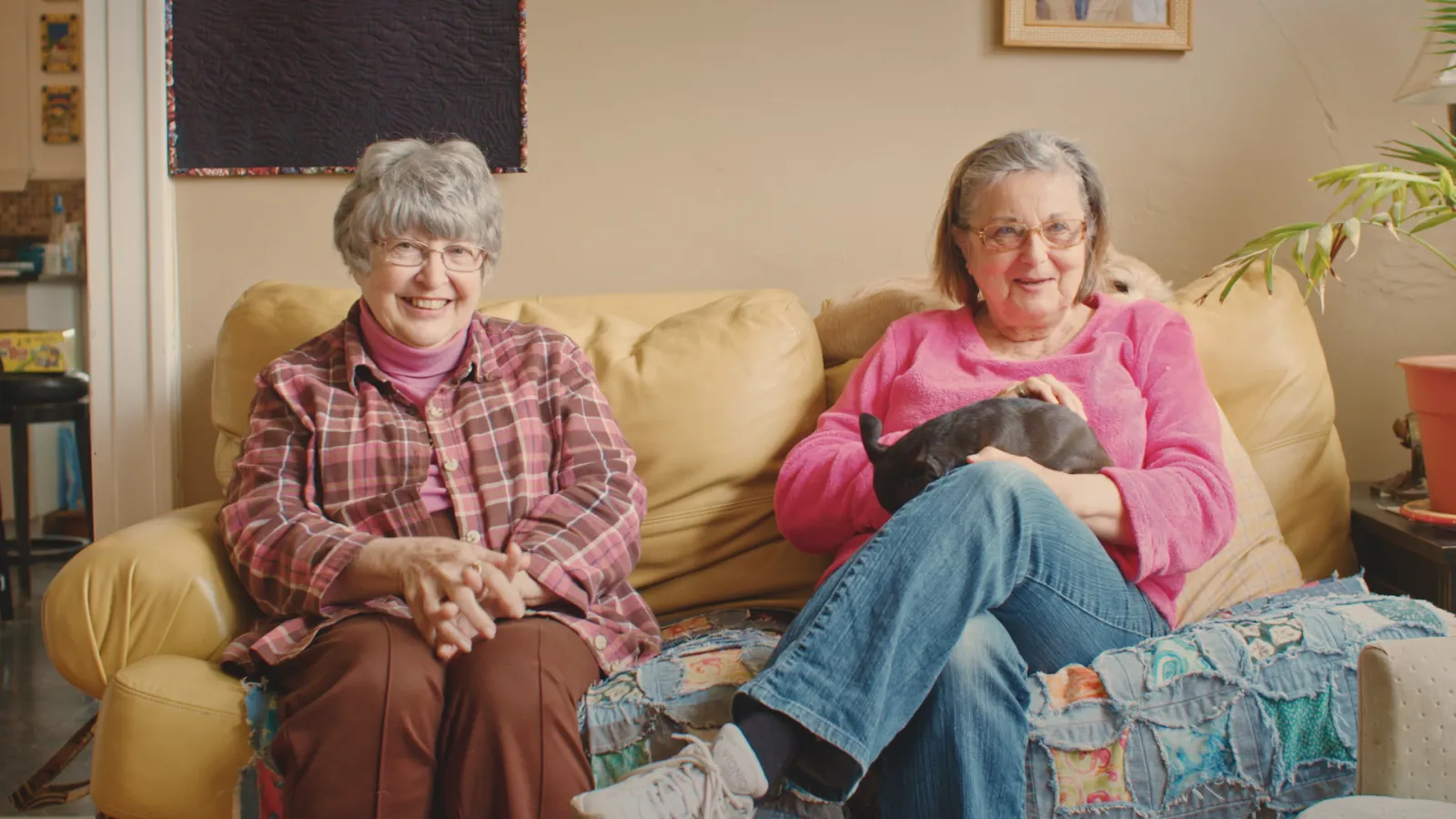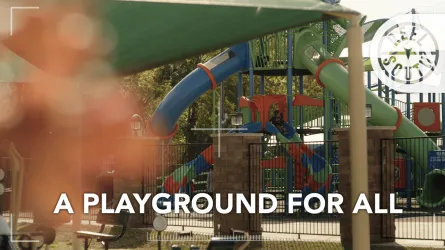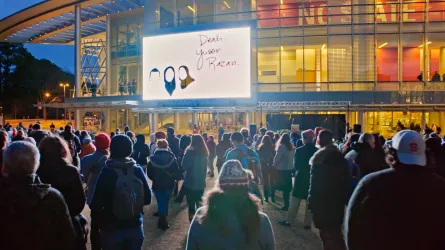Emmy-nominated filmmaker Olivia Merrion captures the "Academy Awards of quilting" in her film Quilt Fever, which follows the weeklong spectacle as nearly 30,000 quilters descend upon Paducah, Kentucky, every year for its huge quilt competition, doubling the town’s population. The visiting quilters from all over the world vie for the coveted Best of Show award. Beyond the competition, the film weaves through stories of individual quilters to reveal deeper motivations behind the art.
The interview below was edited and condensed.
What inspired you to make this film?
I love telling stories about artists and there is a really nice non-pretentious vibe around the whole art form of quilting. At the same time, I was also interested in finding a story that centered around a single event. I think it's an interesting way to approach a story because everything depends on a location, rather than specific plot points. It was something I had never done before and wanted to try. After some light internet sleuthing, I found QuiltWeek in Paducah, Kentucky (or Quilt City USA). I took a lot inspiration from great shorts like Election Night, The Convention, and Twin Days. All of which are very different, but all exist within one space during a finite amount of time.
How did you get connected to the quilt world?
The year before I began working on Quilt Fever, I had a film residency with The Center for Investigative Reporting where I directed films that lived alongside reporters’ investigations. I loved it, but the topics were heavy, so I felt the itch to do something more lighthearted after the residency was complete. Something where I could focus on the fun and playfulness of the characters. I slowly became a bit of a quilt-groupie, hovering over their messaging boards and personal blogs. So then I started cold-calling and interviewing quilters about their experiences surrounding the Paducah festival.
What was your process in choosing your featured interviews?
I interviewed a lot of people, many of whom are not in the film. The talented Nico Bovat, who edited the film with me, was a great sounding board about who would be my main characters. Ultimately, every character had to build off the previous, and if anyone was not fitting in the flow, we chose to cut them. Some of the characters were so strong on their own, but ultimately it was about looking at the whole of the film.
How did you find Anita? (Her story is amazing)
Anita is such an amazing person and it was very organic the way we met. In the film, the awards night comes last, but in reality, that is the first event of the festival and where we met Anita. In documentary, I think you're always hoping to catch something (anything!) of a real moment. After filming her reaction, I knew I wanted to chat more with her. So I sort of reverse-engineered her story after the fact.
Were there other featured quilters that you didn't include in the final? Was is your process in choosing who should and shouldn't be included?
Yes, one person specifically I interviewed that I wish could have fit in the film was Hollis Chatelain. She's a big deal in the quilt world. I love her story because she is very much a part of the social justice side of quilting and a big quilt celebrity. But ultimately, because of the way we shot her scenes and the flow of her overall story, her scenes had to be cut. For example, she was teaching at the festival as opposed to showing a quilt off in the main exhibition hall, so our coverage of her just felt tonally different from the rest of the piece.
What other stories or features you wish you could have included in the final?
I wish I could have highlighted The National Quilt Museum! A museum that is entirely dedicated to the past and future of quilting. We did a walkthrough with the director of the museum and I love the scene on its own, but again, ultimately it was impacting the flow of the overall piece and had to be cut. I still managed to sneak in a shot of the museum out the window when we are driving with The Quilt Channel, though!
Where do you see the future of quilting going?
Hard to say what the future of quilting is, and I'm not the expert to necessarily make any predictions. But I do know that ever since it resurged in popularity in the 70s, it hasn't looked back.
Is there anything else you'd like to add?
I'm really excited about having Quilt Fever be a part of Reel South shorts! Since this film is so location-specific, it feels great to recognized by a location-specific platform with such strong programming.
And I'd also like to just add a little about the process. It was a two-person production crew — me and John Picklap (DP). I spoke with about a dozen-ish quilters before the festival to get a good sense of the place of Paducah in the quilt world and confirm what I was learning via the internet. Everything else I figured out once I got there, which was very intentional. I was coming off of doing a series of films where a lot was planned in pre-production because it had to be. So I wondered what would change if I switched up the process -- where I had no idea who my characters were or what was going to happen. In a way, the film is very personal because it’s how I experienced the week. I was relying entirely on the people I was meeting in real-time. The first day we got there, John and I were standing awkwardly at a sandwich shop without a place to sit (everywhere very crowded) and two quilters saw us and invited us to sit with them. We were barely chatting five minutes before they invited us to a quilt show&tell at their hotel and an Eleanor Burns show later in the week. That was how I wanted to build the film. I wanted to focus on collecting moments, that I would worry about stitching together in the edit. Because, in the end, I knew I had a beginning and end since the film loosely follows the arc of the competition. So I had room to play in between. The edit was 1000% in this case where the film was made — done by myself and the talented Nico Bovat. Then I worked with two incredible composers, Aled Roberts and Sam Simkoff, to get the perfect sound for the piece.
Category
Share


